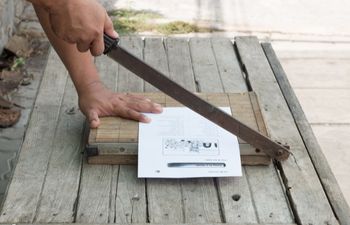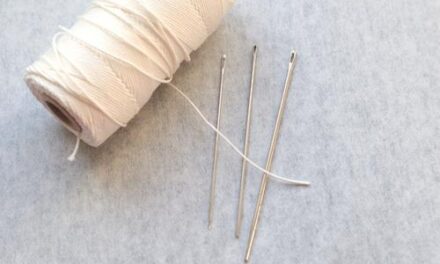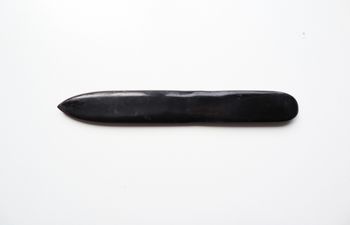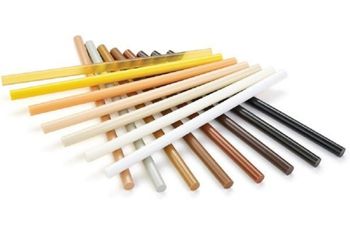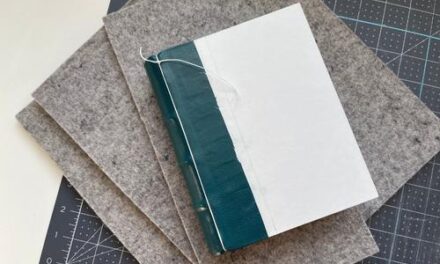In bookbinding, there are few tools more important than the paper cutter. Paper cutters (also called ream cutters, guillotine cutters, stack cutters or rotary trimmers) allow for quick, accurate cuts across many sheets of paper at one time. Efficiency like this is important to all bookbinders, regardless of experience level. Today, I’ll be discussing my top 3 features to look for in a paper cutter. This way, when it comes time to buy one for bookbinding, you know which specs are worth paying attention to.
Cutting Length
Every paper cutter has a height and width, where the height is generally taller than the width. The cutting bar will always run vertical and parallel to the height. Since the height is the largest measurement, it also defines the cutting length. The cutting length tells us the maximum dimension a sheet of paper can have to still fit in the machine.
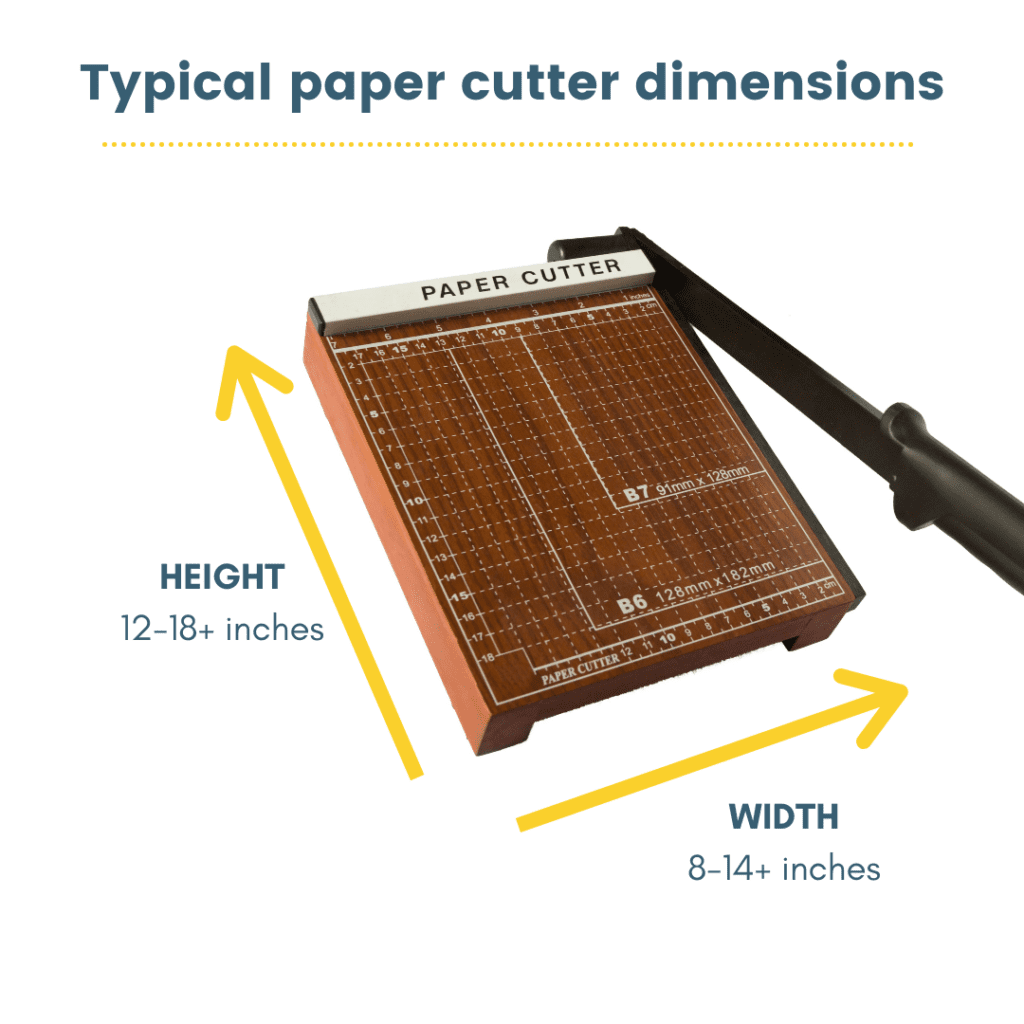
The most commonly used paper sizes in bookbinding fall somewhere between 8-1/2 inches wide by 11-17 inches tall. I personally use 11×17 and 11×18 sheets of my favorite paper for my journals.
I recommend you choose a machine with a cutting length somewhere between 12 to 18 inches.
Cutting length is usually rounded up. Be sure to check the product specifications for actual size.
To make things easy, online retailers will often round the cutting length number up. My cutter has a listed length of 15,” but the actual area is only 14-3/4″. This is important, so be sure to check the product specifications before you buy.
Paper cutters larger than 18 inches
Some heavy duty paper cutters can go all the way up to a cutting length of 24 inches or more. These larger models often require a cutting stand to maintain the machine’s weight. They also sport a price to match – usually falling anywhere from $1,000 to $5,000+.
Sheet Capacity
Most people will only use a simple paper cutter for single sheets, but bookbinders are often cutting anywhere from 20-80 sheets at a time. To meet these needs, there are several categories of cutters to choose from. Each category is defined by the volume of paper the machine can handle at one time.
Depending on paper weight (usually 20lb text), here are the general paper cutter categories and sheet capacities:
- Rotary trimmer: 1-5 sheets
- Guillotine cutters: 20-50 sheets
- Ream cutters: 50-90 sheets
- Stack cutters: 100+ sheets
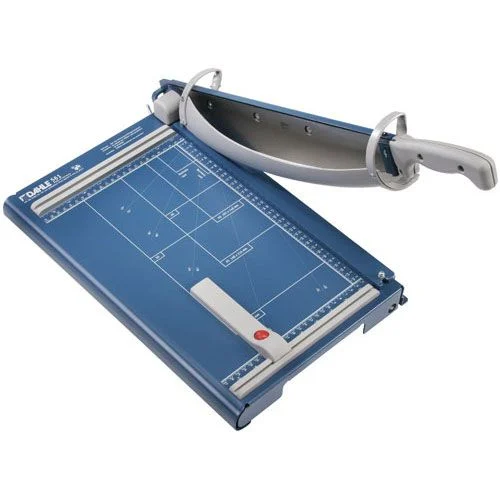
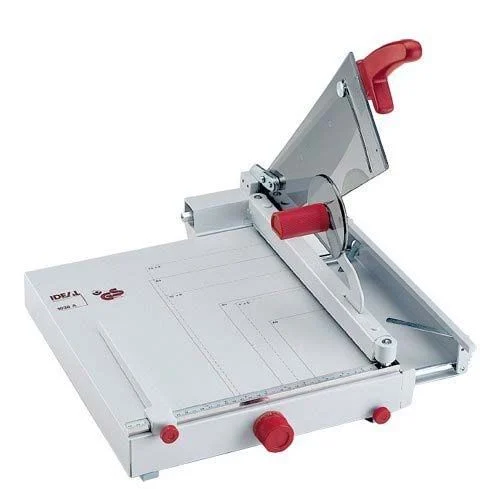
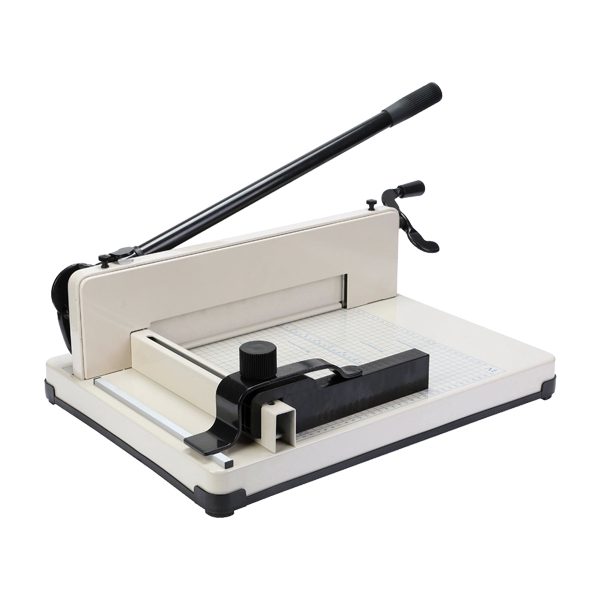
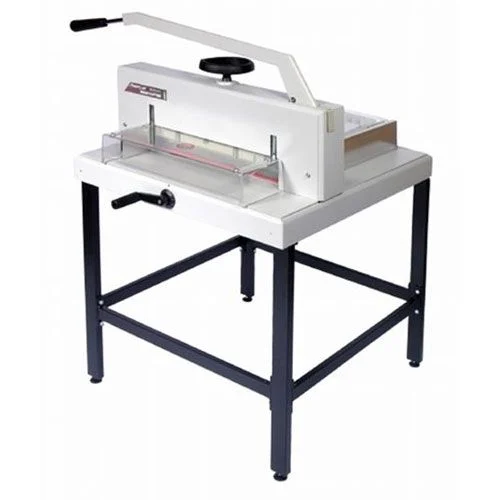
For most bookbinders, I recommend a guillotine cutter with a capacity of 20-50 sheets. These machines can handle various paper thicknesses, making them the most versatile for general use.
If you’re trying to trim the foredge of a book block containing more than 50 sheets, I recommend you buy a book plough or ream cutter.
A book plough is a completely separate piece of equipment and topic, but it’s safe to say this tool can handle any size book block you put in front of it. Ream cutters, on the other hand, have a steel bar in place to define the maximum height manageable by the machine. This limit is what truly separates a book plough from a paper cutter, though both will create a clean foredge when used with sharp blades.
Blades
Paper cutters with a 20+ sheet capacity are usually equipped with a heavy duty blade. This blade will eventually need to be sharpened or completely replaced. Your mileage will vary based use, number of sheets and paper weight, but it’s safe to say most quality blades will last 1 year or more with frequent use.
When selecting a machine, be sure to choose a model with steel blades (German steel is preferred in our industry) as these are of the highest quality and dull slowly.
It’s also a good idea to make sure there are replacement blades available at a decent price, or have someone lined up to sharpen your blade when the time comes.
Paper cutter blade replacement & sharpening
Replacing a blade can be difficult, since most paper cutter blades are secured with machine tightened screws during production. For this reason, you’ll need access to the right tools or support for the job.
Blade sharpening services can be hard to find, especially for heavy duty steel blades, so do some research before you buy. Service fees are usually $20-$150 depending on the blade. Turnaround times can take a while if the shop is small, so be prepared to give up your blade for 1-2 weeks.
Tip: I recommend buying a replacement blade when the machine is purchased. This way, you’ll always have a sharp blade on hand while the other is being serviced.
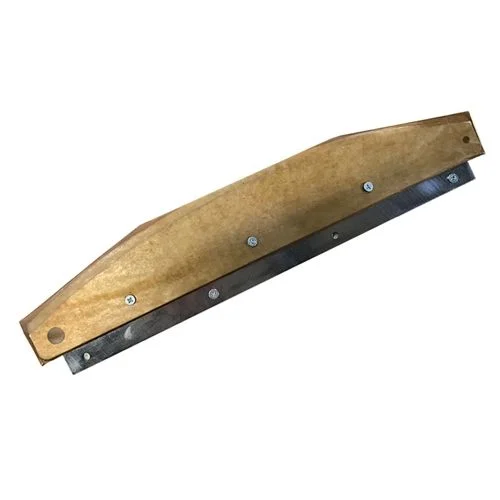
Where can I buy a paper cutter online?
I ordered my guillotine paper cutter from MyBinding.com. I prefer this online retailer because their prices are in line with the industry and they offer support for most of their products.
I hope this information was helpful! Buying a paper cutter is one of the biggest purchases you’ll make as a bookbinder, so be sure to take your time and read the reviews. Once you get it home and setup, you’ll wonder why it took you so long to get one in the first place 🙂
More bookbinding goodness
✨ What tools do I need to get started bookbinding?
- Bookbinding Tools & Supplies Quick Start Guide – learn all about book making tools, which to buy first & where to go online
- Pick up my popular Complete Starter Bookbinding Tools Kit – all the bookbinding essentials in one spot
🌟 Looking for a simple way to start making books?
Try a Complete Book Materials Kit. Each one has everything you need (+ tutorials & videos) to make a beautiful book without all the fuss.
Thank you for taking me along on your book making journey!
Misty
